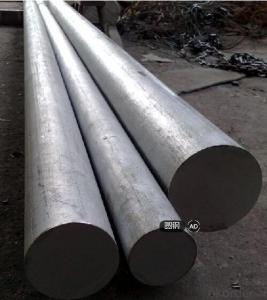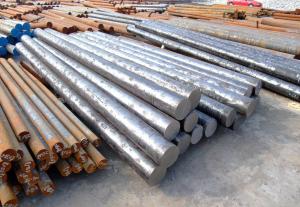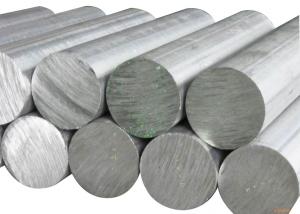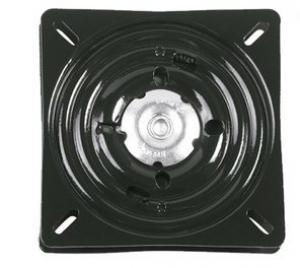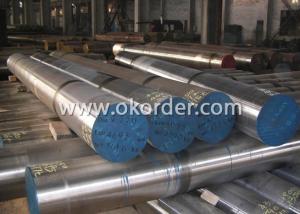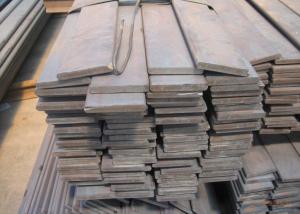Hot Dip Galvanized Steel Round Bar/Hot Dip Galvanized Bar Steel
- Loading Port:
- Shanghai
- Payment Terms:
- TT OR LC
- Min Order Qty:
- 3 m.t.
- Supply Capability:
- 100000 m.t./month
OKorder Service Pledge
OKorder Financial Service
You Might Also Like
Item specifice
Hot Dip Galvanized Steel Round Bar/Hot Dip Galvanized Bar Steel
Details Information of Hot Dip Galvanized Steel Round Bar/Hot Dip Galvanized Bar Steel
| Name | Hot Dip Galvanized Steel Round Bar/Hot Dip Galvanized Bar Steel |
| Shape | Round Bar/Square Bar/Flat Bar/Plate/Wire |
| Standard | GB/ASTM/SAE/AISI/DIN/JIS/EN/BS |
| Surface Treatment: | Black/Peeling/Polished/Machined |
| Delivery Condition: | Hot Rolled or Forged/Peeled or Black Surface |
| Test | SGS/UT 100% Elements Testing |
| Certificate: | ISO/Mill Certificate |
| Service: | 24 hours online service / |
| more than 20 years trading and manufacture | |
| Quality Assurance: | the third party inspection, such as SGS, BV, TUV…etc. is acceptable |
| Packaging Details: | Seaworthy Packaging or as per customer's packing instruction |
| Carbon structure round bar | Q195 Q235A Q235B 10# 20#-55# S45CB |
| Low alloy high strength round bar | Q345A/Q345C/Q345D Q345B Q345E |
| Alloy structure round bar | SAE51B20 20Cr 40Cr 40CrV 20CrMo/30CrMo/35CrMo/42CrMo 20CrMoA/30CrMoA/35CrMoA/42CrMoA/42Cr ML20CrMo/ML30CrMo/ML35CrMo/ML42CrMo B7/SCM435-440 20MnTiB 20CrMnMo 20CrMoH 42CrMoH 40MnB/40MnBH 30Mn2-40Mn2 27SiMn 50CrVA 30CrMnTi |
| Pinion steel | 20CrMnTi 20CrMnTiH 20CrMnTiHCS/20CrMnTiHLD Q20CrMnTi-1/Q20CrMnTi-2 |
| Sucker rod | 20-35CrMoA |
| Free-cutting steel | GT1215S |
| Spring steel | 60Si2MnA 65Mn |
| Ball bearing steel | GCr15 |
Chemical Composition of Hot Dip Galvanized Steel Round Bar/Hot Dip Galvanized Bar Steel
| C | Si | Mn | P | S | Cr | Ni | Cu |
| 0.17-0.24 | 0.17-0.37 | 0.35-0.65 | ≤0.035 | ≤0.035 | ≤0.25 | ≤0.25 | ≤0.25 |
| Tensile strength (σb/MPa) | Yield strength (σb/MPa) | Elongation (δ5/%) |
| ≥410(42) | ≥245(25) | ≥25 |
Company Introduction of Hot Dip Galvanized Steel Round Bar/Hot Dip Galvanized Bar Steel
CNBM International Corporation is the most import and export platform of CNBM group(China National Building Material Group Corporation) ,which is a state-owned enterprise, ranked in 270th of Fortune Global 500 in 2015.
With its advantages, CNBM International are mainly concentrate on Cement, Glass, Iron and Steel, Ceramics industries and devotes herself for supplying high quality series of refractories as well as technical consultancies and logistics solution.

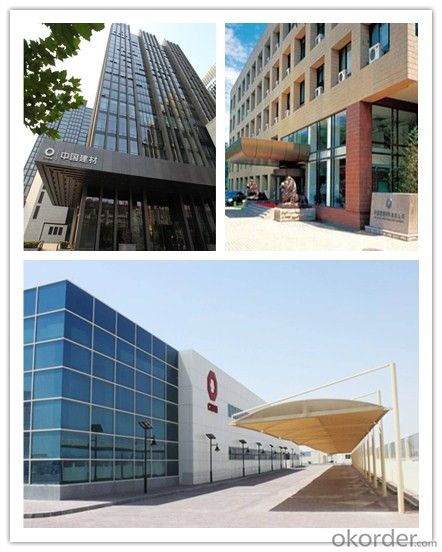
Certificates of Hot Dip Galvanized Steel Round Bar/Hot Dip Galvanized Bar Steel
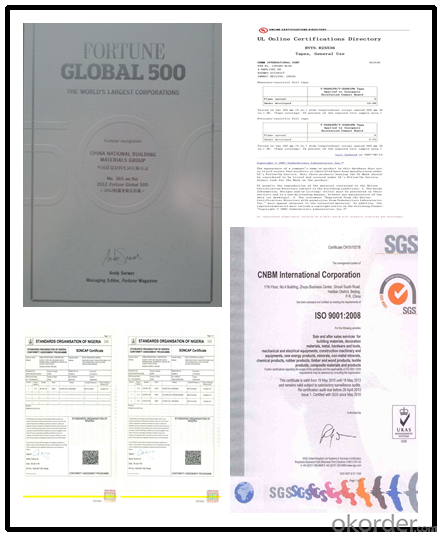
Packaging & Delivery of Hot Dip Galvanized Steel Round Bar/Hot Dip Galvanized Bar Steel
Packaging Detail | Sea worthy packing /as per customer's packing instruction |
Delivery Detail | 15 ~ 40 days after receiving the deposit |
Products show of Hot Dip Galvanized Steel Round Bar/Hot Dip Galvanized Bar Steel
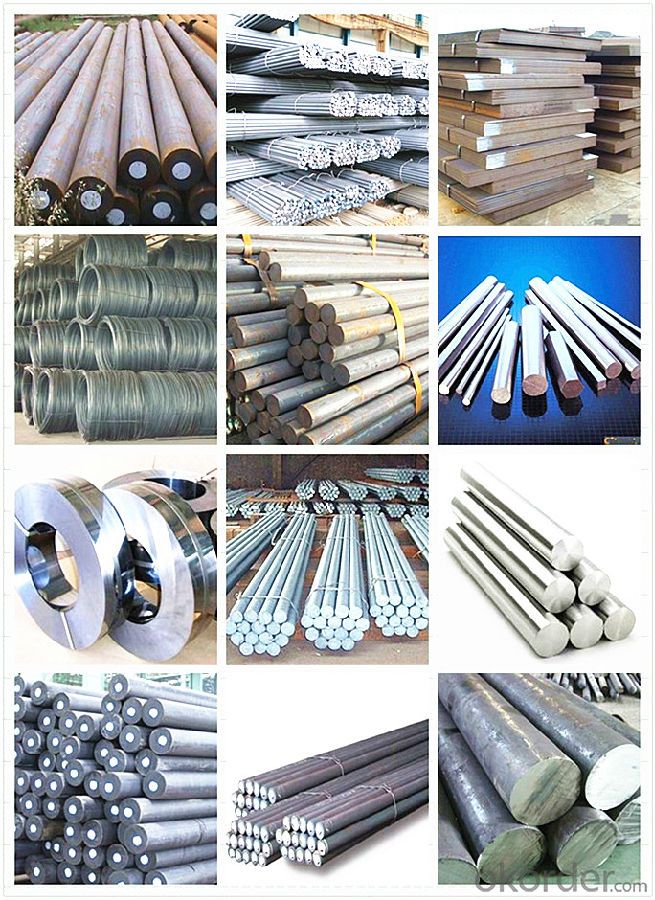
FAQ
Are you a trading company or manufacturer? | Manufacturer |
What’s the MOQ? | 3 metric ton |
What’s your delivery time? | 15-35 days after downpayment received |
Do you Accept OEM service? | Yes |
what’s your delivery terms? | FOB/CFR/CIF |
What's the Payment Terms? | 30% as deposit,70% before shipment by T/T |
Western Union acceptable for small amount. | |
L/C acceptable for large amount. | |
Scrow ,Paybal,Alipay are also ok | |
Why choose us? | Chose happens because of quality, then price, We can give you both. Additionally, we can also offer professional products inquiry, products knowledge train (for agents), smooth goods delivery, excellent customer solution proposals. |
What's your available port of Shipment? | Main Port, China |
What’s your featured services? | Our service formula: good quality+ good price+ good service=customer's trust
|
Where are your Market? | Covering more than 160 countries in the world |
- Q:What are the different tempering techniques used for special steel?
- There are several tempering techniques used for special steel, including air tempering, oil tempering, water tempering, and salt bath tempering. Each technique involves heating the steel to a specific temperature and then cooling it at a controlled rate to achieve desired hardness, strength, and other mechanical properties.
- Q:How is tool and die steel used in the manufacturing of molds and dies?
- Tool and die steel is an essential material used in the manufacturing of molds and dies due to its high strength, toughness, and wear resistance properties. It is used to create precise and durable molds and dies that are capable of withstanding the high pressures and temperatures involved in the manufacturing process. This steel is carefully designed and machined to produce intricate shapes and forms required for various industries such as automotive, aerospace, and electronics. Tool and die steel ensures the longevity and accuracy of molds and dies, leading to efficient and high-quality production in manufacturing processes.
- Q:Is special steel suitable for manufacturing precision components?
- Manufacturing precision components can greatly benefit from the use of special steel. This type of steel is specifically designed to possess exceptional qualities such as high strength, hardness, and resistance to wear, corrosion, and heat. These outstanding characteristics make it the perfect choice for creating precision components that demand tight tolerances, accuracy, and reliability. The inherent strength and hardness of special steel enable the production of durable and long-lasting precision components. This is particularly crucial in industries where components are exposed to intense stress and heavy loads, such as aerospace, automotive, and machinery manufacturing. The wear and corrosion resistance of special steel ensures that the precision components can withstand harsh operating conditions and retain their functionality over extended periods of time. Moreover, special steel's remarkable heat resistance qualifies it for precision components that encounter elevated temperatures. This is especially significant in industries like aerospace and power generation, where components must endure extreme heat without compromising their performance. In addition, special steel offers excellent machinability, which is vital for manufacturing precision components with intricate designs and complex geometries. It can be easily shaped, cut, and formed into various sizes and shapes, enabling the production of intricate and precise components. Overall, the exceptional properties of special steel, including high strength, hardness, resistance to wear, corrosion, and heat, along with its superb machinability, make it highly suitable for manufacturing precision components. Its utilization guarantees the creation of high-quality components that adhere to the stringent requirements of precision applications.
- Q:How does special steel contribute to reducing product waste?
- Special steel contributes to reducing product waste in several ways. Firstly, it is known for its durability and strength, which means that products made from special steel have a longer lifespan and are less likely to break or wear out quickly. This reduces the need for frequent replacements, thereby minimizing product waste. Additionally, special steel can be fabricated into complex shapes and sizes, allowing manufacturers to optimize material usage and minimize waste during production. The ability to customize special steel to specific requirements also ensures that products are designed with the right dimensions and strength, reducing the chances of defects or inefficiencies that could lead to waste. Moreover, special steel often has superior corrosion resistance and other protective properties, making it suitable for applications where products are exposed to harsh environments or frequent use. This reduces the likelihood of premature degradation or damage, further extending the product's lifespan and reducing waste. Overall, special steel's durability, customization capabilities, and protective properties play a significant role in reducing product waste by increasing product longevity, optimizing material usage, and minimizing defects or damage.
- Q:Can special steel be coated or plated?
- Yes, special steel can be coated or plated to enhance its properties or provide additional protection against corrosion or wear.
- Q:What are the properties of magnetic steel?
- Magnetic steel is characterized by its ability to attract and hold a magnetic field. It is typically a hard and strong material, making it suitable for various applications such as in the production of magnets, electrical transformers, and motors. Magnetic steel also has high permeability, allowing it to efficiently conduct magnetic flux. Additionally, it exhibits good resistance to corrosion, which helps maintain its magnetic properties over time.
- Q:What are the main characteristics of corrosion-resistant castings?
- Corrosion-resistant castings have been designed to endure the destructive effects of corrosion, a natural process that causes the deterioration of metal surfaces due to chemical reactions. These castings possess several key features that render them impervious to corrosion. First and foremost, corrosion-resistant castings are fashioned from specific alloys or materials that possess inherent resistance to corrosion. These materials may consist of stainless steel, nickel-based alloys, or high-performance alloys such as Inconel or Hastelloy. These alloys contain elements like chromium, molybdenum, or nickel, which generate a protective layer on the casting's surface, preventing the infiltration of corrosive agents into the underlying metal. Secondly, meticulous casting techniques are employed in the production of these castings to ensure a solid and defect-free structure. This is crucial in warding off the penetration of corrosive substances into the castings. Techniques such as investment casting or vacuum casting are commonly utilized to achieve a high degree of precision and quality. An additional significant characteristic of corrosion-resistant castings is their ability to withstand various types of corrosion, including general corrosion, pitting corrosion, crevice corrosion, and stress corrosion cracking. General corrosion refers to the gradual and uniform deterioration of the metal surface, while pitting corrosion leads to the formation of localized holes or pits. Crevice corrosion occurs in confined spaces such as gaps or joints, and stress corrosion cracking arises from the combined effects of stress and a corrosive environment. Corrosion-resistant castings are designed to endure all these types of corrosion, ensuring long-lasting durability and dependability. Furthermore, corrosion-resistant castings often undergo additional surface treatments or coatings to enhance their resistance to corrosion. These treatments may encompass passivation, where the surface is treated chemically to create a protective oxide layer, or the application of protective coatings such as epoxy or polyurethane. These treatments provide an additional layer of defense against corrosive agents, prolonging the lifespan of the castings. In conclusion, the primary characteristics of corrosion-resistant castings include the utilization of corrosion-resistant alloys, meticulous casting techniques, resistance to various types of corrosion, and the application of surface treatments or coatings. These characteristics ensure that these castings can endure harsh environments and maintain their structural integrity over time, making them ideal for applications where corrosion poses a significant concern.
- Q:What are the different methods of surface shot blasting for special steel?
- Special steel can be subjected to various surface shot blasting techniques. Among the most commonly employed methods are: 1. Wheel blasting: Utilizing a rapidly spinning wheel embedded with abrasive particles, this technique eliminates impurities and imperfections from the surface of the special steel. 2. Air blasting: By propelling abrasive particles onto the special steel surface using compressed air, this method achieves a thorough cleaning and prepares the surface for subsequent treatment or coating. 3. Wet blasting: This approach involves blending abrasive particles with water and spraying the resulting mixture onto the special steel surface. The inclusion of water helps manage dust and heat generated during the blasting process, rendering it suitable for delicate or sensitive steel surfaces. 4. Vacuum blasting: By incorporating a vacuum system alongside abrasive particles, this technique effectively eliminates both particles and contaminants from the special steel surface. It proves particularly valuable for removing paint or coatings. 5. Shot peening: Employed as a specialized variant of shot blasting, shot peening enhances the strength and fatigue resistance of special steel. It entails bombarding the surface with small spherical particles, generating compressive stresses that bolster the steel's durability. Each of these methods offers distinct advantages and is suitable for different types of special steel and surface conditions. The selection of the appropriate technique hinges upon factors like desired surface finish, contamination levels, and specific steel application requirements.
- Q:How does special steel contribute to the oil and gas equipment industry?
- Special steel plays a crucial role in the oil and gas equipment industry by offering enhanced strength, corrosion resistance, and heat resistance properties. This type of steel is specifically designed to withstand the extreme conditions of oil and gas exploration, extraction, and processing. One of the primary benefits of special steel in this industry is its superior strength. Oil and gas equipment, such as drill pipes, wellheads, and pipelines, are subjected to high pressure, heavy loads, and harsh environments. Special steel, with its high tensile and yield strength, ensures that these components can withstand these demanding conditions without failure, ensuring the safety and reliability of the equipment. Corrosion resistance is another significant advantage of special steel in the oil and gas equipment industry. The extraction and transportation of oil and gas involve exposure to corrosive substances, such as hydrogen sulfide, carbon dioxide, and saltwater. Special steel is designed to resist corrosion, minimizing the risk of equipment degradation, leaks, and costly maintenance. Moreover, special steel exhibits excellent heat resistance properties. In the oil and gas industry, equipment often operates at high temperatures due to the process of oil refining, gas compression, or steam injection. Special steel's capability to withstand high temperatures without losing its mechanical properties makes it an ideal choice for critical components like valves, heat exchangers, and turbines. The use of special steel also enables the oil and gas industry to explore and extract resources from challenging environments. Offshore drilling rigs, for example, face harsh conditions such as strong waves, saltwater exposure, and extreme temperatures. Special steel's resistance to these environmental factors ensures the durability and longevity of offshore equipment. In summary, special steel significantly contributes to the oil and gas equipment industry by providing enhanced strength, corrosion resistance, and heat resistance. By utilizing this type of steel, the industry can ensure the reliability, safety, and longevity of its equipment, ultimately enhancing operational efficiency and minimizing downtime.
- Q:What are the properties of case-hardening steel?
- Case-hardening steel is a type of steel that possesses specific properties, such as high surface hardness and improved wear resistance. It achieves these properties through a process called case hardening, which involves heating the steel to a specific temperature and then introducing a carbon-rich environment. This process allows the steel to absorb carbon atoms, resulting in a hardened outer layer while maintaining a tough and ductile core. The hardened surface layer provides excellent resistance to abrasion and impact, making case-hardening steel suitable for applications requiring durability and strength, such as gears, shafts, and bearings.
1. Manufacturer Overview |
|
|---|---|
| Location | |
| Year Established | |
| Annual Output Value | |
| Main Markets | |
| Company Certifications | |
2. Manufacturer Certificates |
|
|---|---|
| a) Certification Name | |
| Range | |
| Reference | |
| Validity Period | |
3. Manufacturer Capability |
|
|---|---|
| a)Trade Capacity | |
| Nearest Port | |
| Export Percentage | |
| No.of Employees in Trade Department | |
| Language Spoken: | |
| b)Factory Information | |
| Factory Size: | |
| No. of Production Lines | |
| Contract Manufacturing | |
| Product Price Range | |
Send your message to us
Hot Dip Galvanized Steel Round Bar/Hot Dip Galvanized Bar Steel
- Loading Port:
- Shanghai
- Payment Terms:
- TT OR LC
- Min Order Qty:
- 3 m.t.
- Supply Capability:
- 100000 m.t./month
OKorder Service Pledge
OKorder Financial Service
Similar products
New products
Hot products
Related keywords
